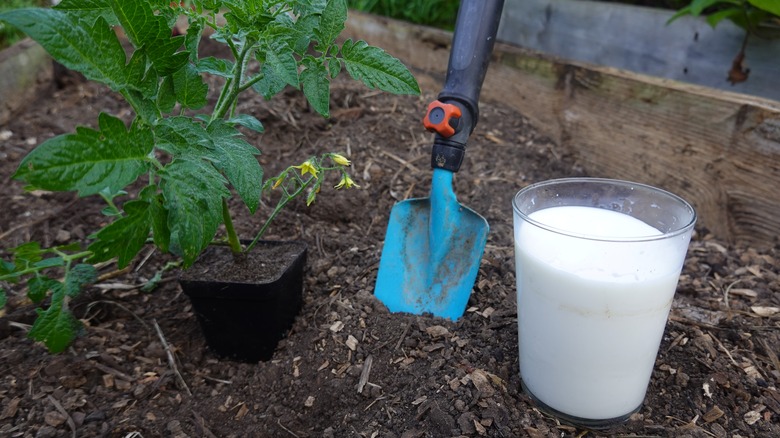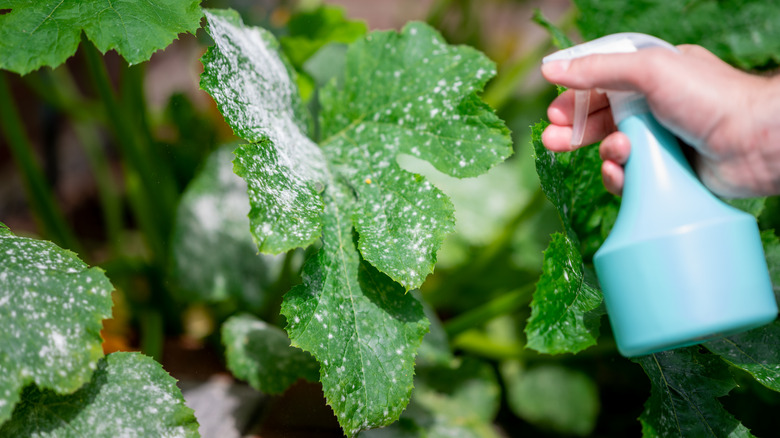Does Milk Actually Work To Treat Mildew In Your Garden?
Growing and maintaining a garden takes hard work. Getting the soil just right, watering and feeding your plants properly, and attracting beneficial bugs are only a few steps to beautiful success. It's also important to examine your garden regularly to catch any insect damage or fungal growth early and nip it in the bud before it ruins all your hard work. While many signs like brown marks or holes could indicate a problem, if you notice a white film on your plant's leaves, the issue is likely powdery mildew. The University of Minnesota Extension notes that the fungus can affect as many as 10,000 different plants, so it's important to have a solution in mind just in case the spores make their way to your garden. An effective solution to this problem could be found in milk. In fact, there are many creative ways to use milk in your garden — one being milk spray.
Many say that milk spray does work to get rid of powdery mildew and can work quickly, while others believe using it as a preventive is more effective than depending on it as a cure. While there are differences in the exact formula, several sources recommend starting with a 40% milk and 60% water solution. You can always make the spray stronger if needed. Powdery mildew spreads by the wind and could spread quickly through your garden, but early detection could minimize the damage.
How to apply milk, alternatives, and prevention
If you notice powdery mildew in the spring or fall, spray the infection with the milk solution once a week or every 10 days. It's thought that the proteins found in milk react with the sun to act as an antiseptic. Some use yogurt to get a handle on mildew in their gardens for similar reasons. To use milk spray as a mildew preventative, treat your plants every week or two. Consistency is the key to success. Another kitchen ingredient that will destroy fungus on your plants is baking soda. Mix the substance with water and a dash of dish soap to treat the problem. Neem oil and fungicides are also options if you can't get the powdery mildew under control before it starts damaging your plants.
Since preventing garden problems is the ultimate goal, note that powdery mildew is more common under certain conditions. To that end, don't overcrowd your plants. Instead, space them apart and prune them to allow proper airflow and reduce humidity. Adequate sunlight is also important because the fungus prefers the shade. Water your plants at the base instead of overhead to keep the leaves dry.
If you've had problems with powdery mildew in the past, consider filling the space with mildew-resistant plants next time. Note that powdery mildew can hide in your garden over the winter months, so be sure to clear out the space in the off-season to stop another infection in the spring.

